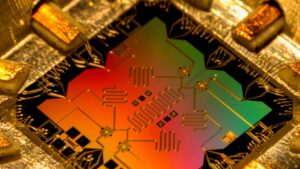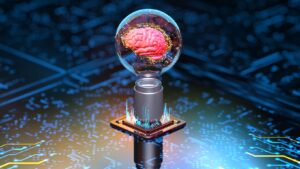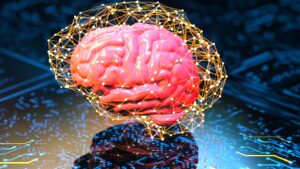Quantum computing, a concept once confined to the realm of science fiction, is rapidly becoming a reality. As traditional computers reach their physical limits, the world of technology turns its gaze towards this promising frontier. With the potential to revolutionize everything from data encryption to drug discovery, it’s no wonder quantum computing is gaining significant attention.
This cutting-edge technology leverages the principles of quantum mechanics to process information at unprecedented speeds. It’s not just about doing things faster, but also about tackling complex problems that are currently beyond our reach. Are you ready to dive into the world of quantum computing? Let’s unravel the mysteries of this exciting field together.
Understanding Quantum Computing
Quantum computing, a rapidly evolving field, harnesses the incredibly potent phenomenon of quantum mechanics to process information. It provides unique advantages, revolutionizes computing’s efficiency, and uncovers possibilities traditional computers find elusive.
Quantum computers utilize quantum bits, or qubits, unlike traditional computers, which use classical bits. A classic bit holds either a 0 or a 1, limiting it to process just one piece of information at a time. Conversely, a qubit operates by the law of quantum superposition, enabling it to exist in both states simultaneously, processing multi-dimensional data.

There’s an important consideration, called quantum decoherence, that poses as a constant challenge. It’s the fragile state of qubits which causes them to lose their information when interacting with the environment – a somewhat paradoxical aspect when considering quantum computing’s potential. Hence, maintaining qubit stability is vital, with quantum error correction methods becoming crucial.
The functionality of quantum computers, while seemingly intimidating, exhibits a distinct edge in tackling complex problems – optimization tasks, material sciences, high-level encryption cracking, and drug discovery, to name a few. It introduces immense processing capabilities, pushing boundaries of what we presently know as ‘computable’.
Quantum Computing vs Classical Computing
Difference lies at the very core of quantum and classical computing. Quantum machines, grounded in the principles of quantum mechanics, utilize quantum bits or qubits, whereas classical computers rely on binary units known as bits.
To illustrate, consider a library filled with books. A classical computer, like a meticulous librarian, flips through one book at a time until it locates the needed book. A quantum computer, on the other hand, scans every book simultaneously, optimizing the search process.
A striking advantage of quantum computing is its ability to handle complex calculations. Quantum computers rely on quantum superposition, enabling them to operate in multiple states at once. As a result, they achieve levels of computational diversity out of reach for classical machines.

Another divergence point: quantum entanglement. By means of this unique property, multiple qubits get interlinked. Actions performed on one instantaneously affects the others, irrespective of distance. Such interconnected qubits, not found in classical computers, ramp up the computational power significantly.
In the realm of encryption, too, quantum and classical computing differ significantly. Classical encryption techniques could possibly fail against the quantum computing’s brute force approach. Yet, this also opens potential avenues for quantum cryptography, paving the way for more secure, encoded data transmission.
The Components of a Quantum Computer
Moving deeper into the intricacies, three main components align to form the framework of a quantum computer—qubits, quantum gates, and quantum circuits.
A qubit, unlike a classical bit, isn’t simply a ‘0’ or a ‘1’. They’re entity of quantum data, encapsulating a coin’s hypocritical stance—residing in a superposition state. Moreover, these quantum bits exhibit unique quantum properties such as superposition and entanglement. For instance, an electron in a magnetic field, where an electron’s spin might be either in alignment with the field, a state known as spin-up or ‘1’, or opposite to the field, a state known as a spin-down or ‘0’.

Quantum gates are essentially the forces that govern these qubits. They act on qubits in a quantum circuit, similar to logic gates in classical computers. Quantum gates manipulate an input of qubits to produce a new output. For example, a gate might flip a qubit’s state from ‘1’ to ‘0’ or force a pair of qubits into an entangled state.
Defining the architecture of a quantum computing setup, quantum circuits come into play. Resembling conventional computing circuits, they assist in the execution of quantum algorithms. A quantum circuit includes a sequence of quantum gates orchestrated to perform a quantum operation. The use of quantum circuits is critical in harnessing the power of quantum bits, enabler for quantum computers to perform complex computations.
Delving into these three components unfolds the beauty of quantum computers’ inner workings, shedding light on how they harness principles of quantum physics to execute complex calculations swiftly. A wide gulf separates quantum and classical computing, not just in technique, but in the realm of outcomes and implications. By mastering these components, quantum computing holds the potential to unleash untapped computational capacity.
The Potential and Challenges of Quantum Computing
Quantum computing, in spite of its infancy stage, demonstrates considerable potential to redefine a multitude of sectors. A key area it can transform involves big data analytics due to its unrivaled problem-solving speed. In an era where data accumulation accelerates exponentially, quantum computing manifests as a promising solution, sorting through quintillions of data points efficiently.
Climate modeling represents another area where quantum computers outshine their classical counterparts. By simulating numerous climate variables simultaneously through the application of quantum superposition, forecasting becomes more accurate, potentially aiding global climate change mitigation efforts.

AI and machine learning, too, lie within quantum computing’s transformative reach. As AI systems rely heavily on computational power for data analysis, the efficiency provided by quantum computations streamlines machine learning processes.
However, these prospects aren’t without their pitfalls. Maintaining quantum state, or quantum coherence, emerges as an uphill task due to interference from the surrounding environment. Reducing this noise level to ensure accurate calculations remains a challenge even for top researchers in the field.
Scaling quantum systems also poses a hurdle, as the stability and number of qubits directly impact their efficiency. Additionally, the sheer intricacy of quantum mechanics often acts as a barrier to widespread adoption. Quantum computing software development also lags behind hardware, adding another layer of complexity.
The Practical Applications of Quantum Computing
Delving deeper into its real-world uses, quantum computing presents transformative impacts in a myriad of fields. One significant application becomes evident in big data analytics. Quantum computing, by processing vast amounts of data faster than classical computers, imparts better data management and processing.
Quantum computing also shines in climate modeling. With its ability to handle complex calculations at warp speed, quantum computers expedite the modeling of climate change patterns. Accurate, time-efficient climate projections guide policies for climate change mitigation, avoiding potential disasters.
Artificial Intelligence and Machine Learning benefit immensely from quantum computing, too. AI revolves around pattern recognition; quantum computers, due to their inherent parallelism, excel at discerning patterns. Putting quantum computing at the heart of AI results in smarter, quicker machine learning algorithms.

The medical field, specifically drug discovery, sees marked improvements with quantum computing’s entry. Drug discovery hinges on understanding molecular structures and simulations—processes quantum computers execute efficiently.
Financial services also stand to profit from quantum computing’s power. By optimizing financial models and speeding up transactions, financial institutions enjoy enhanced operational efficiency and risk management.
The Future Outlook of Quantum Computing
Bearing in mind the roots of quantum computing and its prospective applications, the future seems bright and abundant in possibilities. Despite the challenges, experts in the field remain optimistic, driven by the sheer potential this technology promises.
Significant breakthroughs are on the horizon, the details of which are as follows:

- Refining Quantum Algorithms: To unleash the full potential of quantum computers, the development and refinement of algorithms reside at the core. New, more efficient quantum algorithms are coming into view, aiming to solve complex problems, such as factorizing large numbers or searching large databases, in record times.
- Advancing Quantum Hardware: Quantum hardware continues to evolve at a rapid pace. The creation of more stable qubits and the advancement of topological qubits push the frontier of quantum computing. Enhanced hardware stability translates into longer quantum coherence times, an essential factor for successful quantum computing applications.
- Integrated Quantum Networks: By creating a network of quantum computers, more complex calculations become feasible which stand beyond the reach of individual machines. This ushers the era of quantum internet, granting secure communication channels and invulnerable data transfer.
- Expansion of Quantum Software Ecosystem: Cognizance of the importance of a robust quantum software ecosystem is growing. Open-source frameworks, quantum programming languages, and software tools are expediting quantum readiness and access across the globe.
- Public-Private Partnerships in Quantum Technology: Tech giants and startups are investing heavily in quantum computing. Governments, too, are launching quantum research initiatives. Such collaborations foster a healthy environment for quantum research, development, and application.
Two conditional realities for quantum computing dominate the conversation. If experts manage to refine quantum algorithms, they can potentially solve problems beyond the capabilities of classical computers. If, however, the hardware and software advancements continue at the current pace, quantum computing might transform multiple sectors within a few decades.
While the journey of quantum computing from a theoretical entity to a practical tool is an uphill task, yet its transformative power remains undeniable. High stakes research continues unabated, with the world watching the quantum leap into the future.

